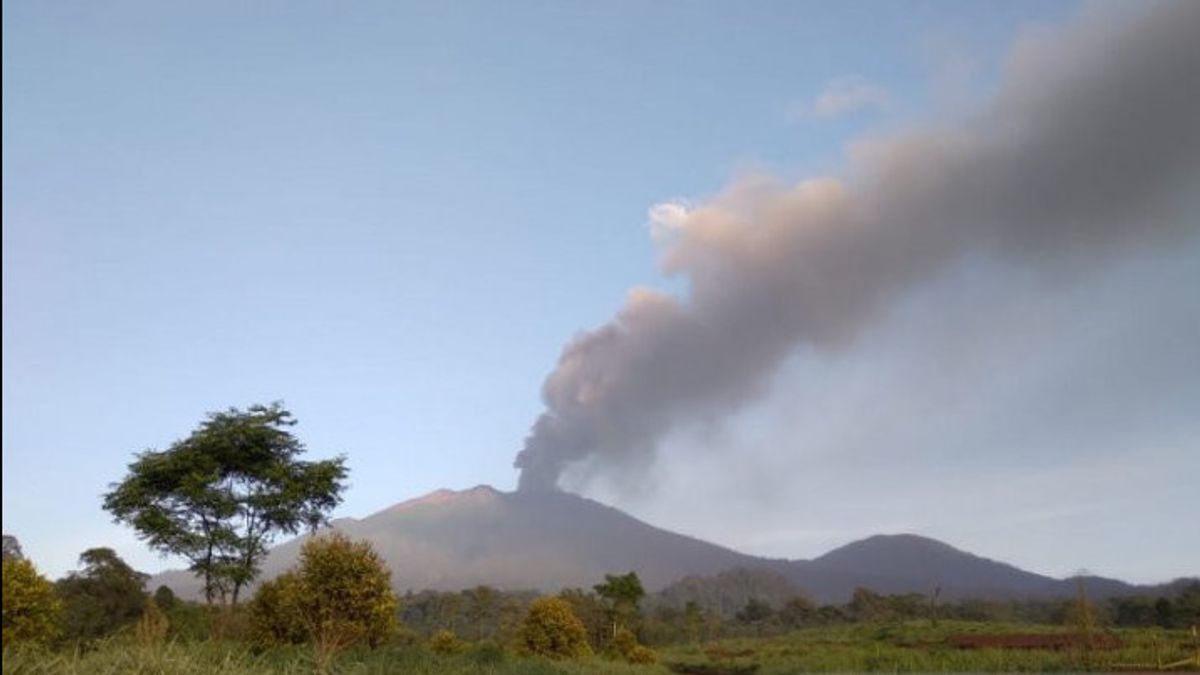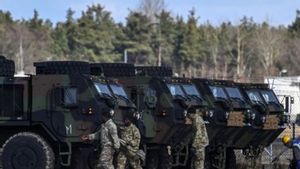BANYUWANGI - Regarding the distribution of volcanic dust from the eruption of Mount Raung, Banyuwangi Regency Government, East Java, has appealed to the public to reduce activities outside the home. If forced to leave the house, he is strongly advised to wear masks and face covers.
Head of the Banyuwangi District Health Office, Widji Lestariono, said volcanic ash carries various materials that are very dangerous to health. The dust contains a number of particles such as silica, potassium, sodium, iron and nickel.
Roughly speaking, volcanic ash is like cement ash, in the form of small, fine rocks that are thrown upwards during a volcanic eruption.
"If this material is exposed to the human body, it can cause various health problems, such as acute respiratory infections (ARI), sore throat, eye irritation, and corneal injuries," said Rio, his nickname, in his written statement, Monday, February 8.
Volcanic ash is formed from material in the form of small pieces of toothed rock, minerals, and volcanic glass. When the gases in the magma chamber begin to spread, these gases will push the magma consisting of silica and gas out of the bowels of the volcano.
When an explosion occurs, magma that comes out of the air will cool and freeze, becoming volcanic rock and broken glass.
"This is what is dangerous. If it gets into our eyes, and hits the cornea, it can cause scratches on our cornea. This can cause blurred vision. Therefore, if volcanic ash gets into the eye, don't rub it immediately. But, immediately clean it with water. which flows. If possible with boor water, "he said.
Another danger is respiratory problems - ARI. Inhalation of volcanic ash can be detrimental to human health, as the harmful aerosols and poisonous gases that form ash can irritate lungs. Respiratory symptoms (short term) that you can feel are runny nose, sore throat / cough, shortness of breath, so that asthma can recur
"This ISPA is usually encountered during volcanic eruptions. If you experience shortness of breath, immediately go to the nearest health service. In order to get immediate help," said Rio.
Previously reported, since Thursday, January 21, Mount Raung has erupted. The status of the mountain, which is located on the border of Banyuwangi, Jember and Bondowoso Regencies, has risen one level from normal (level I) to alert (level II).
Rio appealed to the Banyuwangi people to stay indoors to reduce the risk of being exposed to the volcanic ash from the eruption of Mount Raung, which is now increasingly widespread. If you have to do activities, you are advised to wear masks and face protection, such as a faceshield. "If you have to leave the house, you must wear a mask and glasses to avoid the risk of eruption," he said.
Meanwhile, based on observations by the Banyuwangi Meteorology, Climatology and Geophysics Agency (BMKG), the distribution of volcanic ash when viewed from the forecast of the distribution of volcanic ash, namely the VAAC (Volcanic Ash Advisory Center) Darwin, the height of Mount Raung's volcanic ash on Monday morning, February 8 reached 18,000 feet or 6 km from sea level.
"The spread of volcanic ash is predicted to lead to a number of sub-districts in Banyuwangi. Such as Songgon, Licin, Kalipuro, Giri, and Banyuwangi city. We urge people to wear masks and eye protection when doing activities outside the home," said an officer at BKMG Banyuwangi, Ibnu Haryo.
Meanwhile, on this day, the Banyuwangi area was generally cloudy. However, during the day to night there is a potential for rain with light to moderate intensity. The public is also advised to remain alert to strong winds in the next few days.
"The potential for strong winds occurs when the days are hot or hot but there is a fairly fast growth of cumulonimbus clouds," he explained.
The English, Chinese, Japanese, Arabic, and French versions are automatically generated by the AI. So there may still be inaccuracies in translating, please always see Indonesian as our main language. (system supported by DigitalSiber.id)









